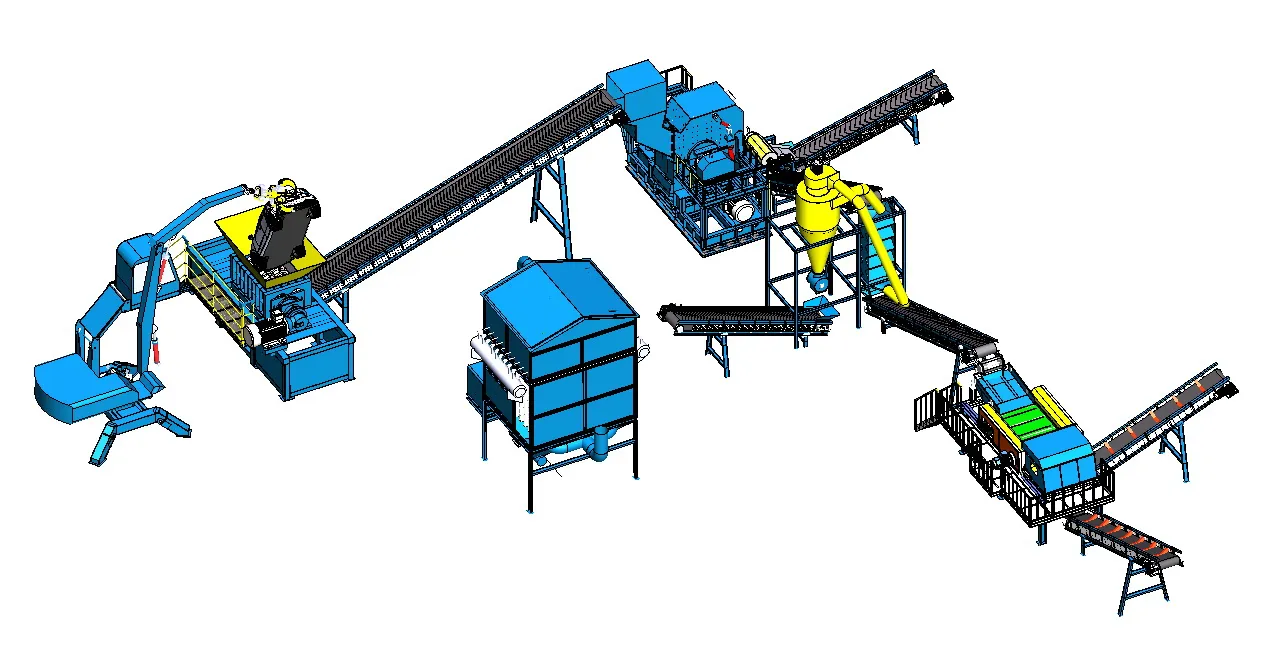A municipal solid waste sorting line stands as a pivotal instrument in effective waste management, offering a transformative approach to recycling and resource recovery. Drawing from extensive industry expertise, this technological solution is designed to enhance the sorting process, ensuring that a higher volume of municipal solid waste is efficiently processed and diverted from landfills.

One of the core advantages of deploying a municipal solid waste sorting line is its capability to improve resource recovery rates. By employing advanced separation technologies such as air classifiers, ballistic separators, and optical sorters, the waste is sorted with precision, extracting valuable materials from the waste stream. This not only conserves resources but also contributes to a sustainable environment by reducing the environmental footprint associated with waste disposal.
The engineering behind these sorting lines is both sophisticated and robust, reflecting decades of research and development in waste management technology. As an industry leader, the focus has been on optimizing each step of the sorting process to handle the varied nature of municipal waste, including plastics, metals, paper, and organic matter. The machinery is designed to handle high-throughput volumes, ensuring seamless operation even under the strenuous demands of urban waste management.

Furthermore, the integration of smart technology within municipal solid waste sorting lines significantly enhances their efficiency. Real-time data analytics and machine learning algorithms enable these systems to adapt to varying waste compositions, continuously optimizing sorting parameters for maximum efficiency. Operators are provided with intuitive interfaces that offer comprehensive oversight and control over the entire sorting process, ensuring that any issues are swiftly addressed, minimizing downtime and maintaining continuous operation.
From an operational standpoint, the reliability and durability of these systems are paramount. Constructed with high-grade materials and components, municipal solid waste sorting lines are built to withstand the harsh environments typical of waste processing facilities. Regular maintenance protocols are minimal, a testament to the engineering excellence that prioritizes long-term performance and minimal intervention.
municipal solid waste sorting line
Notably, municipal authorities and waste management companies adopting these sorting lines gain more than just an advanced technological solution. They also demonstrate a commitment to sustainable practices and community responsibility. By investing in top-tier sorting technologies, they play a crucial role in fostering a circular economy where waste is not merely disposed of, but efficiently segregated and reintegrated into the production cycle.
Efficiency is further complimented by a decrease in labor requirements; the automation of the sorting line handles the bulk of the processing work. This automation not only reduces the risk associated with manual sorting practices but also significantly cuts down on operational costs, providing a cost-effective solution to municipal solid waste management.
In light of regulatory demands and societal expectations, municipalities are increasingly pressured to adopt environmentally friendly methods for waste management.
Municipal solid waste sorting lines stand as a testament to technological advancement meeting environmental necessity. With mounting evidence supporting their effectiveness, these sorting lines are no longer optional but essential for any forward-thinking waste management strategy.
In conclusion, the deployment of municipal solid waste sorting lines offers a comprehensive, high-performance, and sustainable solution for managing urban waste. Their innovative technology, coupled with reliability and efficiency, positions them as the cornerstone of modern waste management practices. Municipalities and waste management companies committed to environmental stewardship and operational excellence are encouraged to implement these systems, bolstering their role in promoting a sustainable future. As the need for transparency and trust grows within environmental management sectors, these sorting lines provide a solid foundation for achieving objectives in resource recovery and waste reduction.


